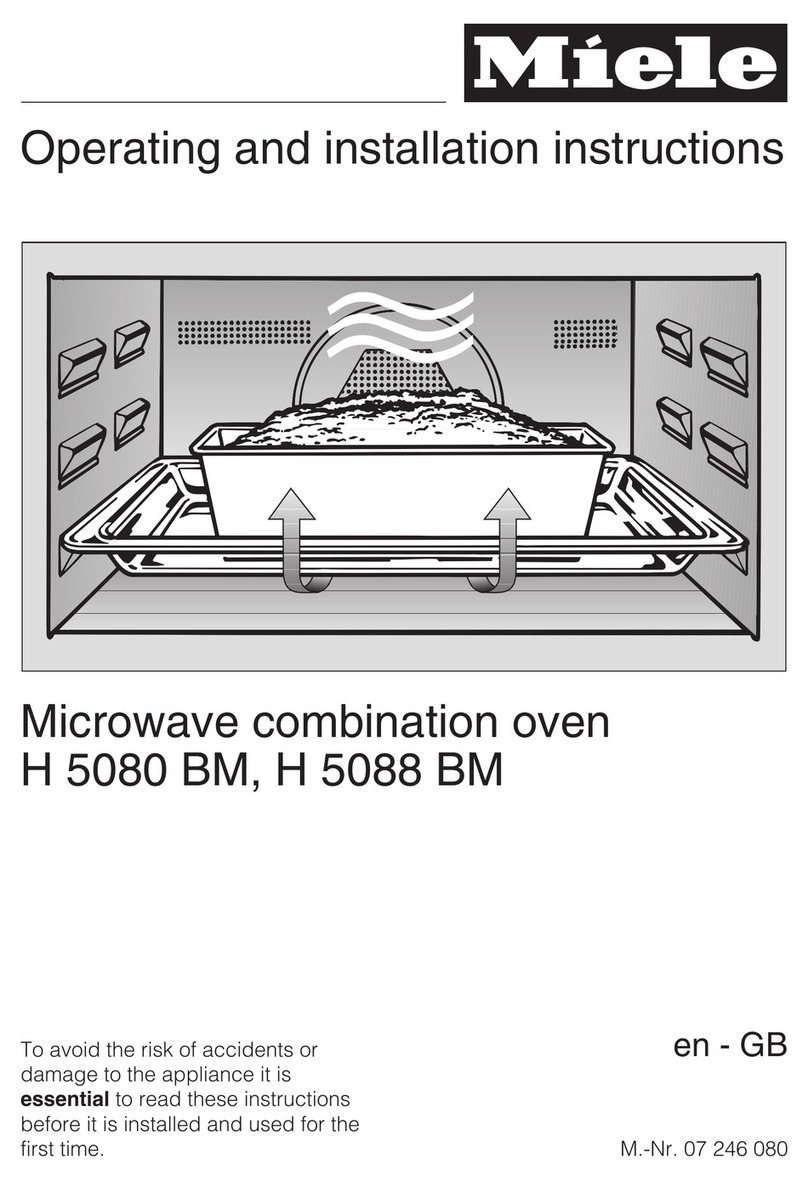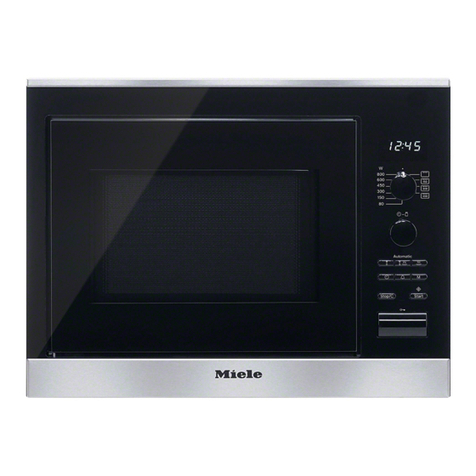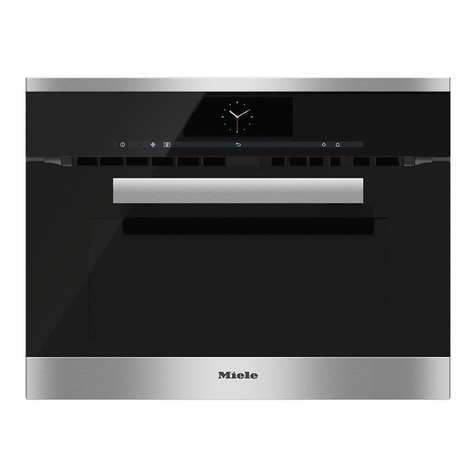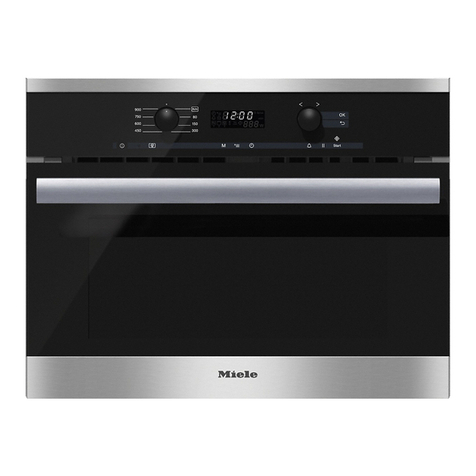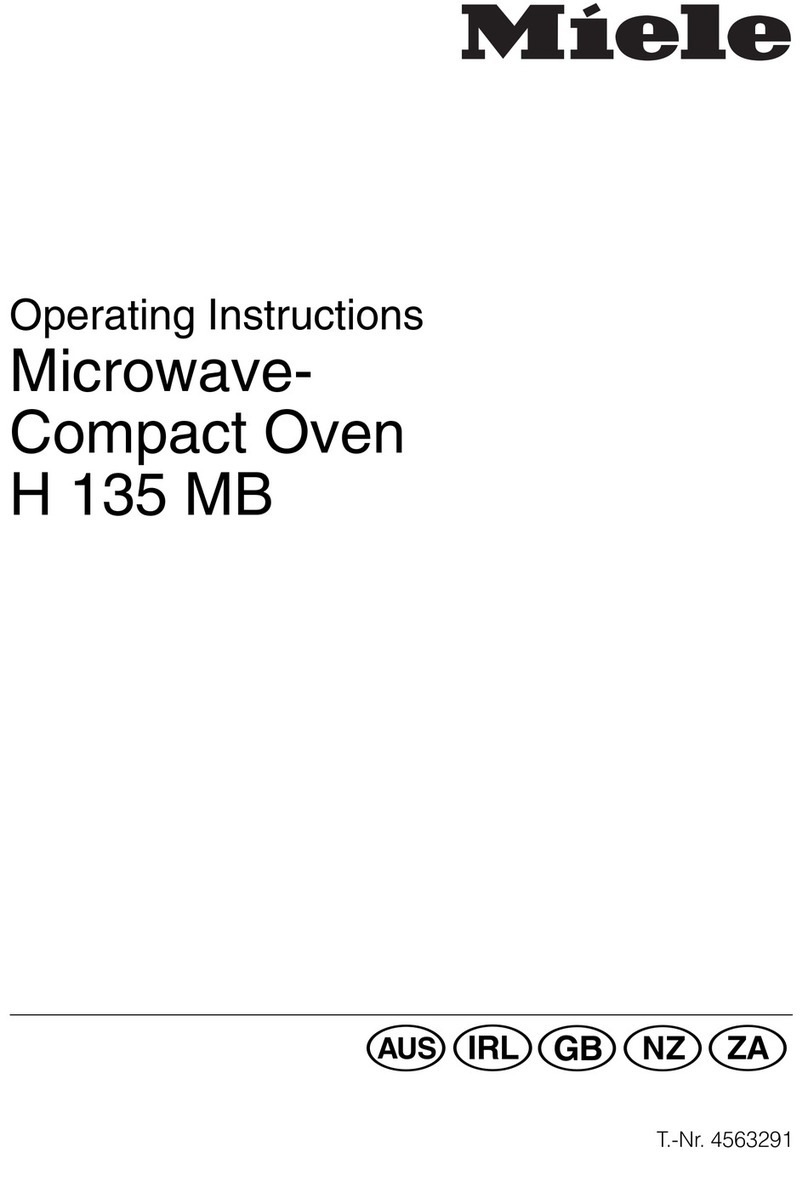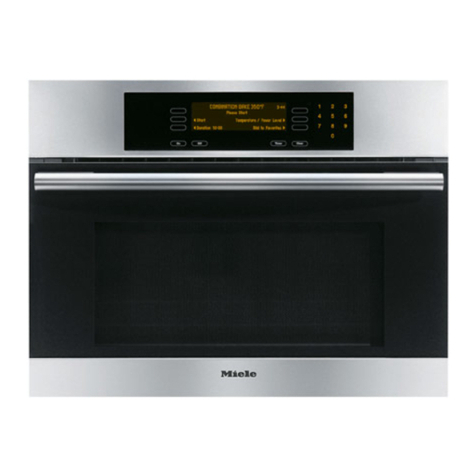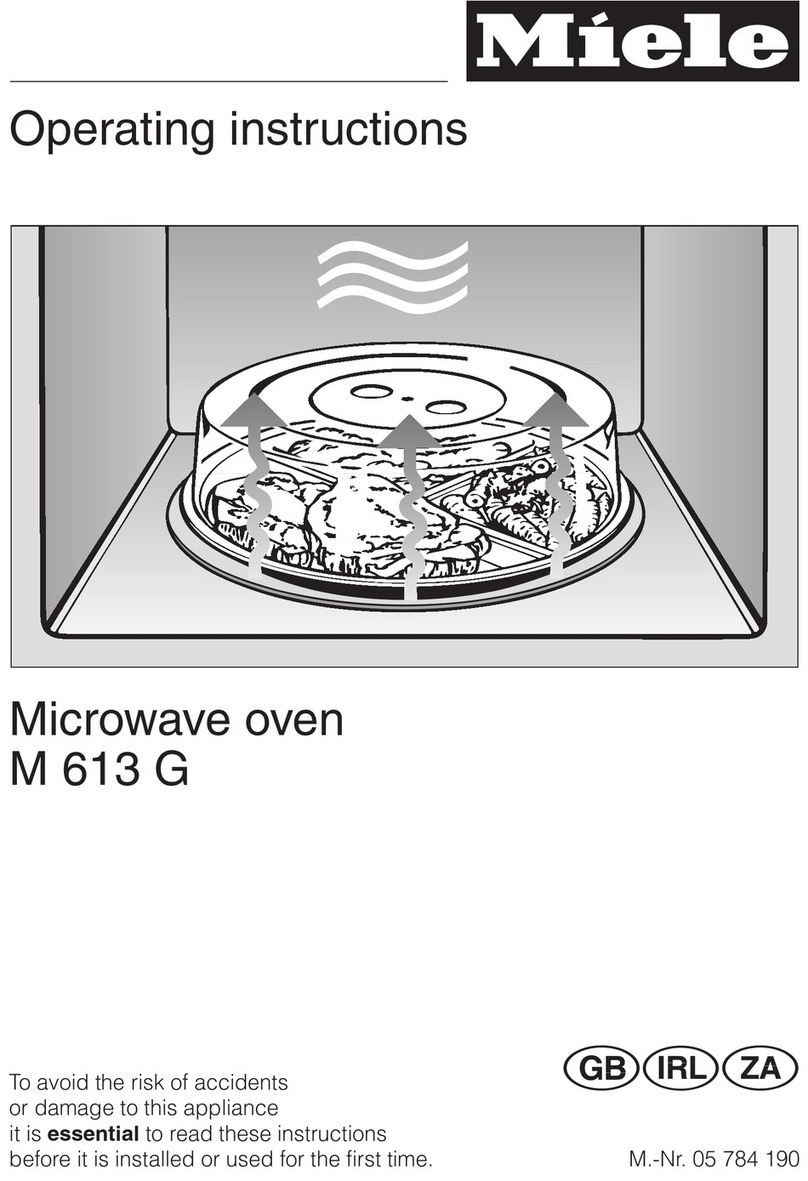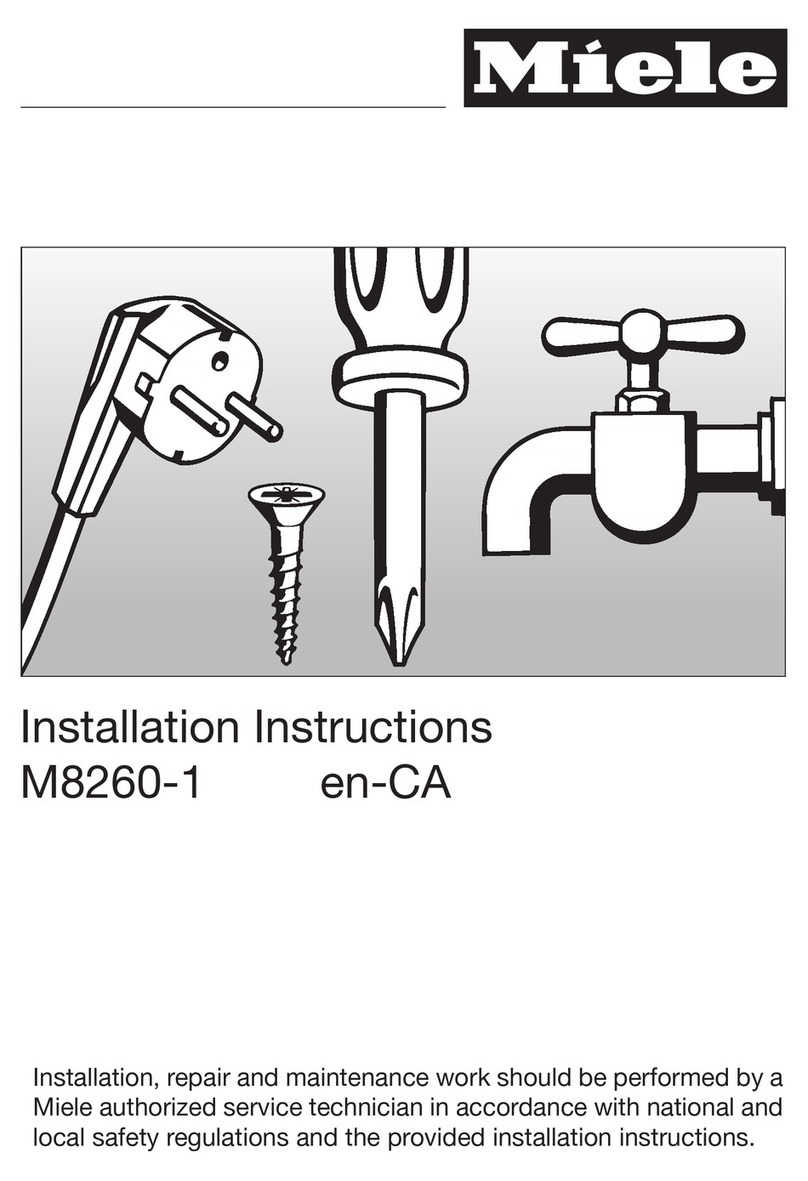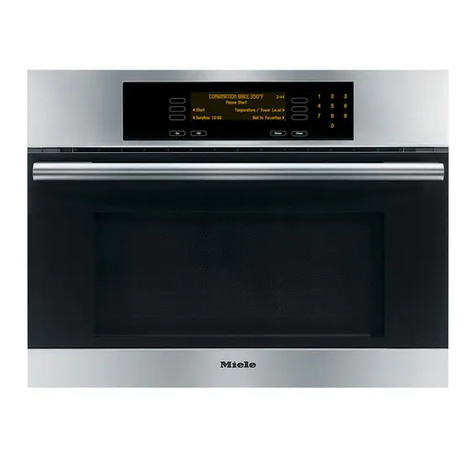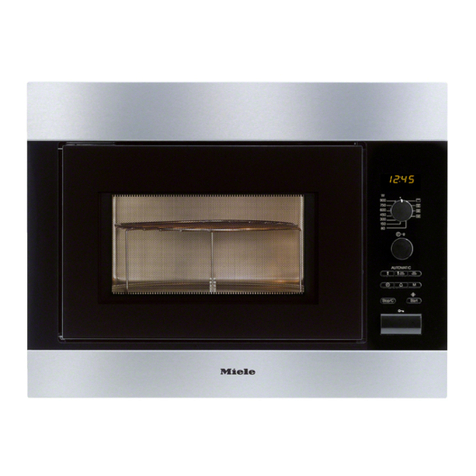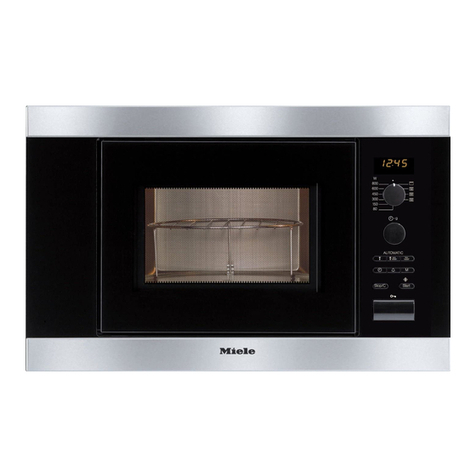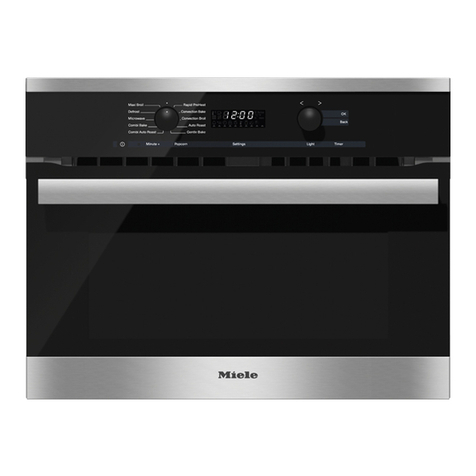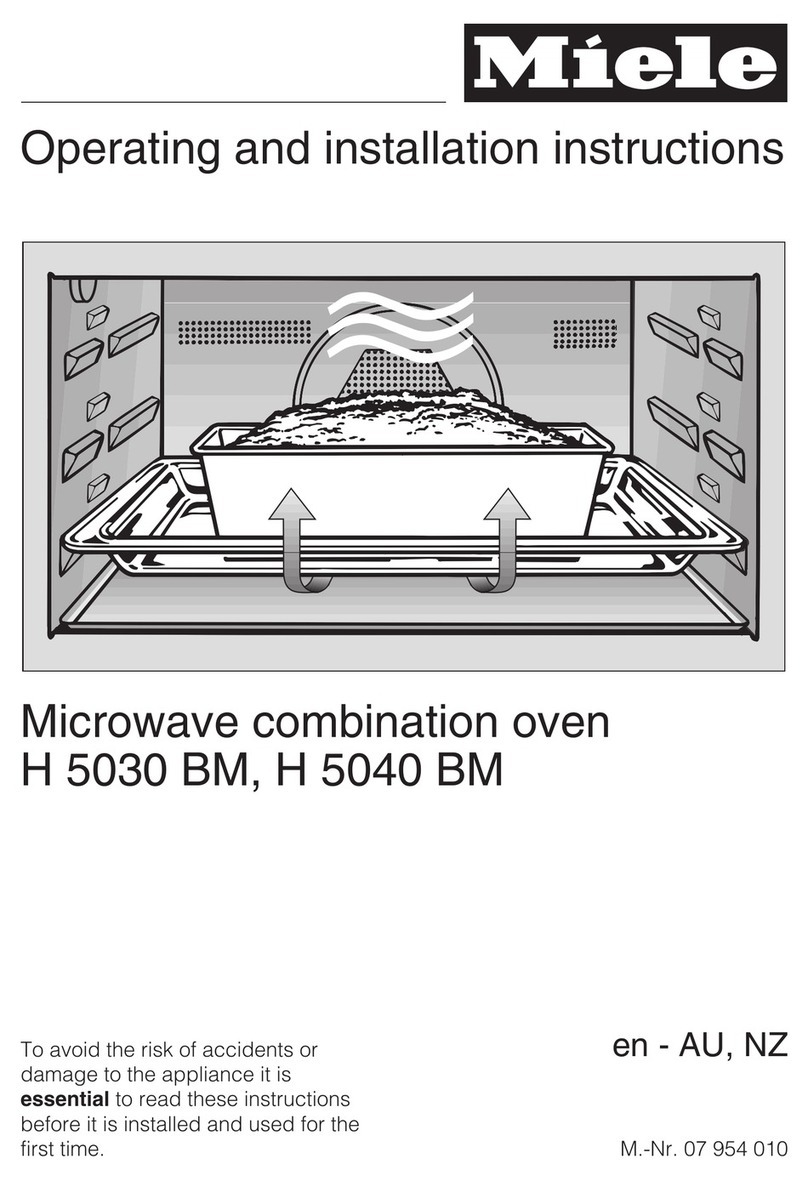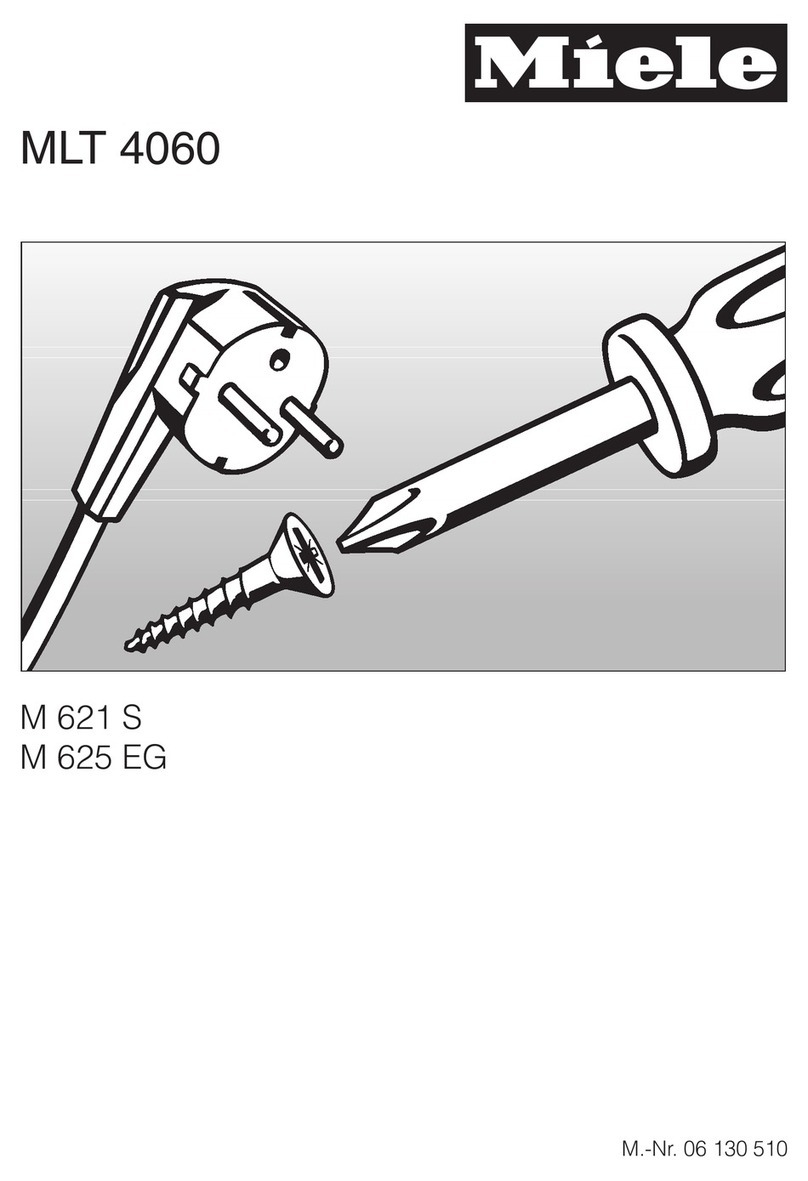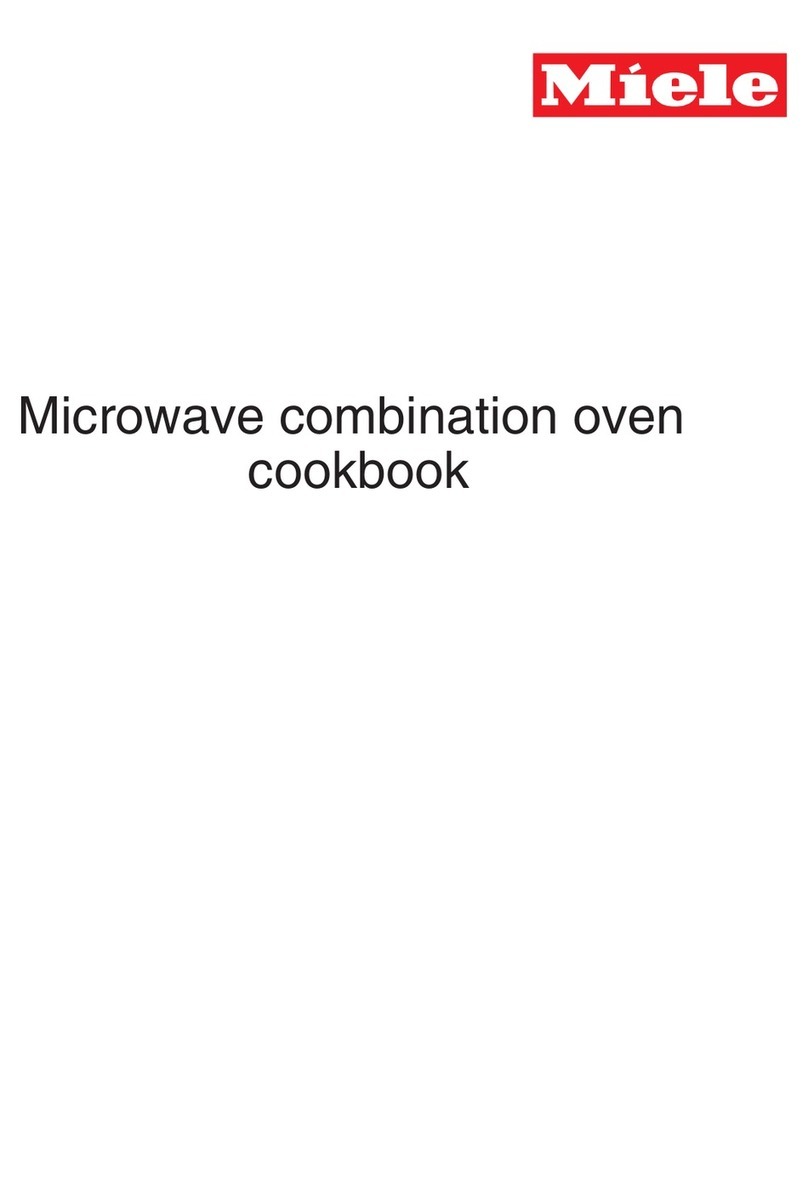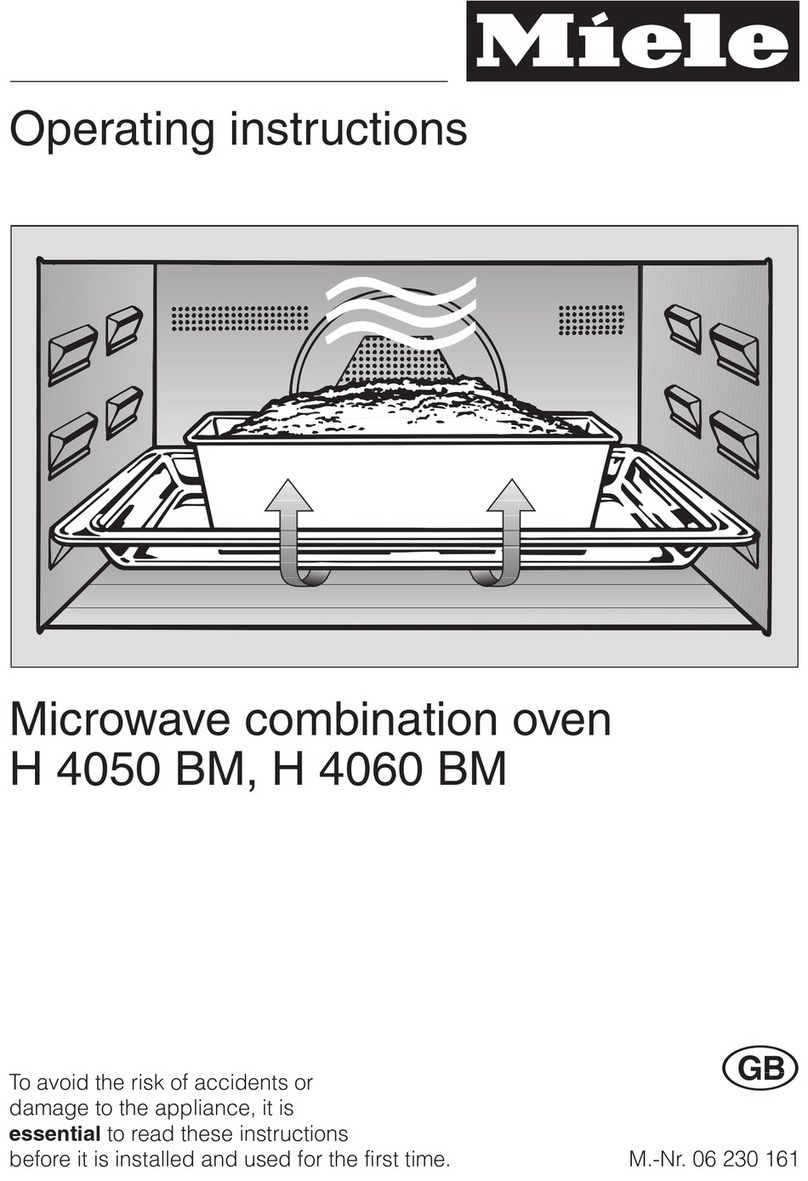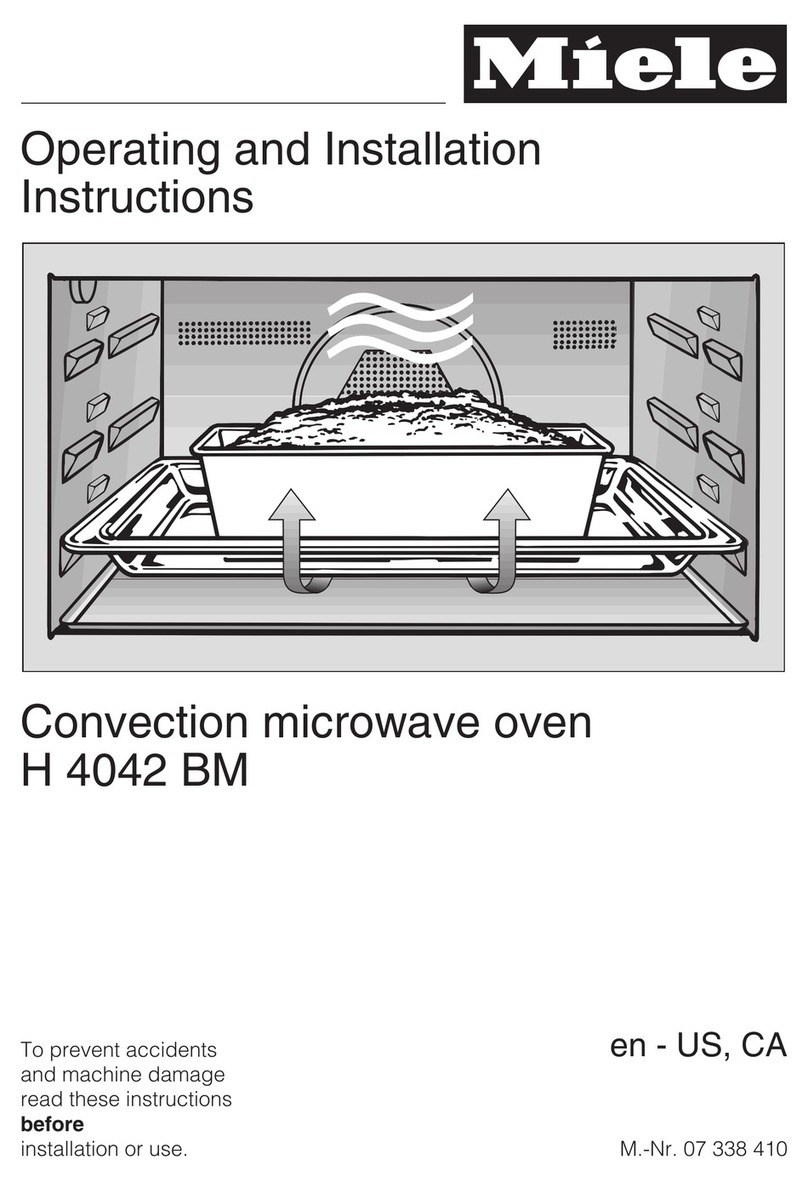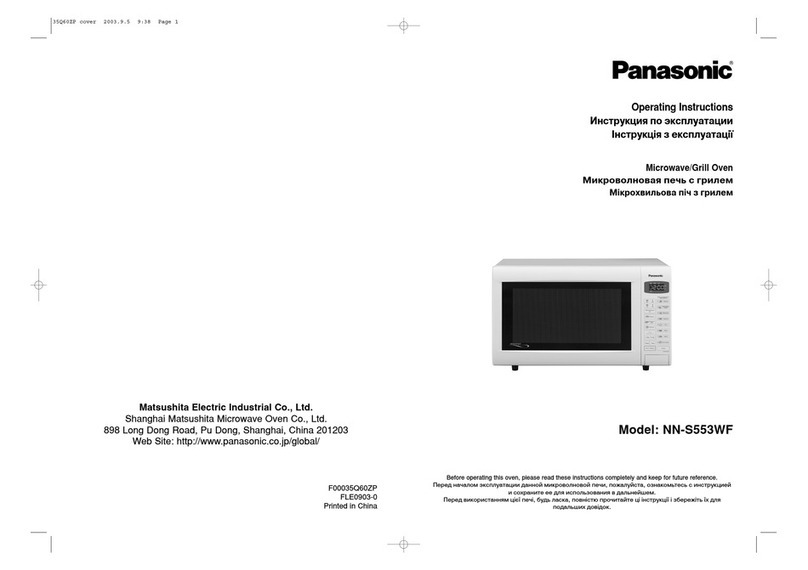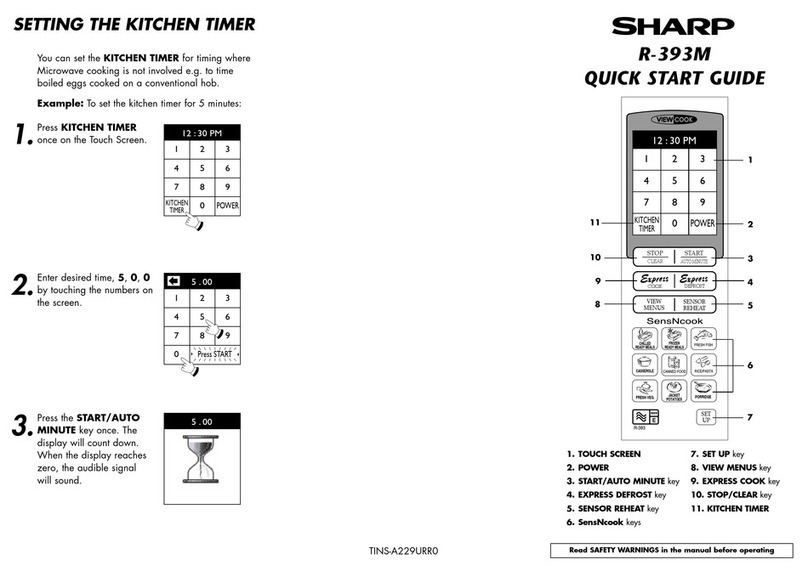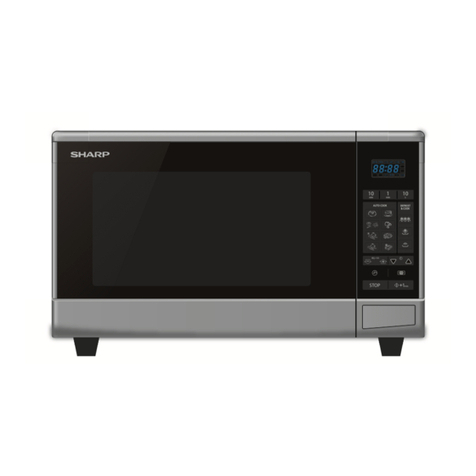Do not use full power if you warm
empty dishes or dry herbs. The
lack or minimum amount of food could
cause damage to the appliance.
Always ensure that food is suffi-
ciently cooked or reheated. Many
factors will affect the overall cooking
time, including the size and amount of
food, its initial temperature, changes to
recipe and the shape and size of cook-
ing container. Some foods may contain
micro organisms which are only de-
stroyed by thorough cooking, therefore
when cooking or reheating foods, e.g.
poultry, it is particularly important that
food is fully cooked through (at more
than 70°C, for more than 10 minutes). If
in doubt select a longer cooking or re-
heating time.
Do not leave the oven unattended
when cooking with oils and fats as
these can be a fire hazard if allowed to
overheat.
If you see smoke rising from the
food in the oven keep the oven
door closed, to avoid fuelling any
flame. Turn the oven selector switch to
“0", or remove the plug from the socket.
Do not open the oven door until the
smoke has dispersed.
Never heat undiluted alcohol in the
microwave oven as this can easily
ignite.
Do not heat up unopened tins of
food in the oven as pressure will
build up in the tin and it will explode.
Food left in the oven to take ad-
vantage of residual heat should al-
ways be covered to avoid it drying out,
and to avoid a possible build-up of con-
densation which could adversely affect
the oven interior.
Try to avoid the interior walls being
splashed with food or liquids con-
taining salt. If it does happen wipe
these away thoroughly, to avoid corro-
sion on the stainless steel surface.
The glass dish and the rack take a
maximum load of 8 kg. Do not ex-
ceed this or the accessories may be
damaged.
Wear oven gloves when removing
the glass tray from the oven. If the
glass tray has a heavy load, pull it only
slightly towards you, and then hold
firmly at the sides as you take it out.
Do not lean or sit on the open oven
door. This could damage the ap-
pliance. Take care in the region of the
hinges. An oven door can support a
maximum load of 8 kg.
When it is hot do not place the
glass tray on a cold surface, such
as a tile or granite worktop . It could
break. Place it on a pot rest or a wire
rack.
Under no circumstances use a
steam cleaner to clean this ap-
pliance. Pressurised steam could give
rise to a short circuit, or cause perma-
nent damage to the surface and to
components, for which the manufac-
turer of the oven cannot accept any re-
sponsibility.
Do not use the oven to heat up the
room. Due to the high tempera-
tures radiated, objects left near the
oven could catch fire.
Warning and Safety instructions
9

